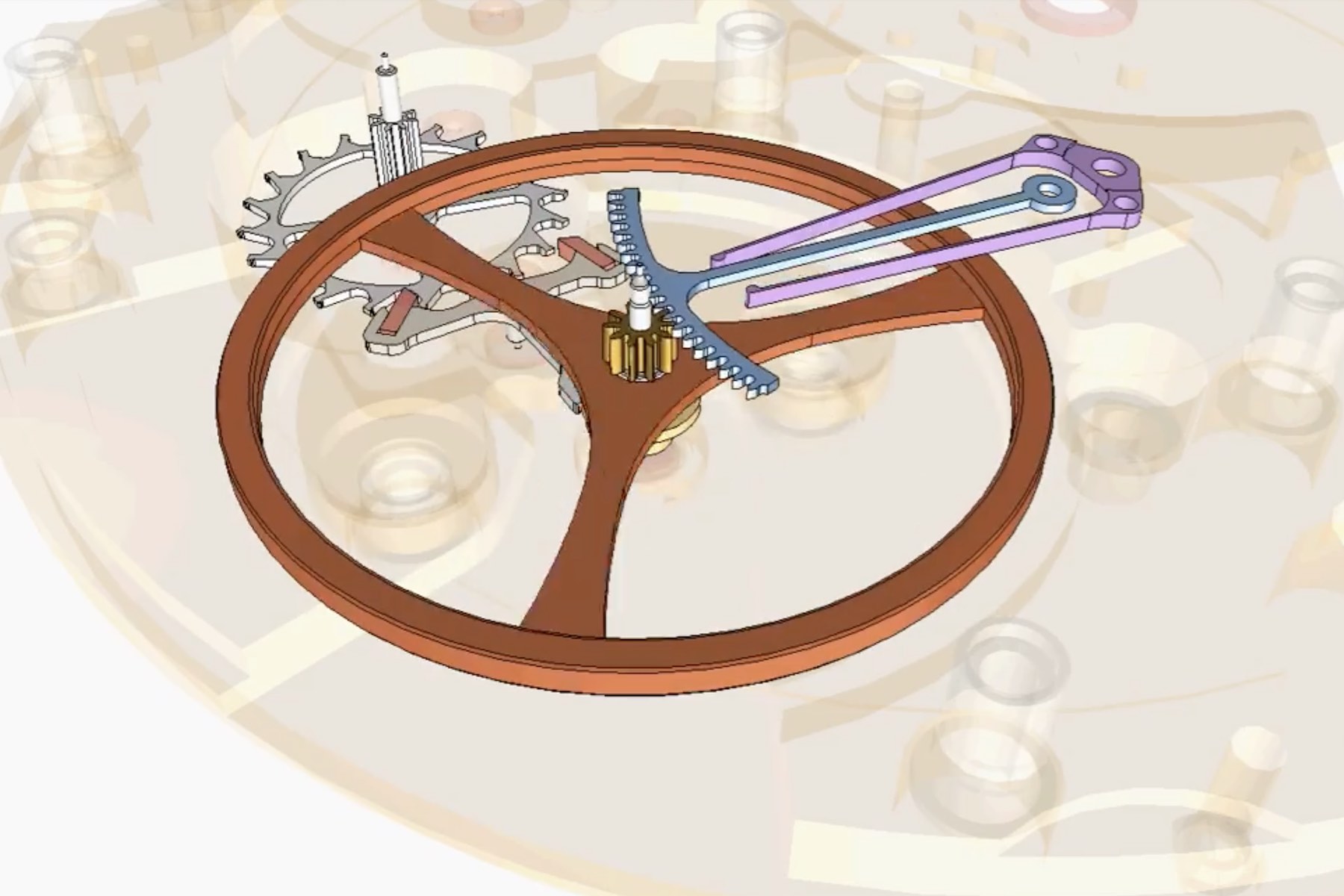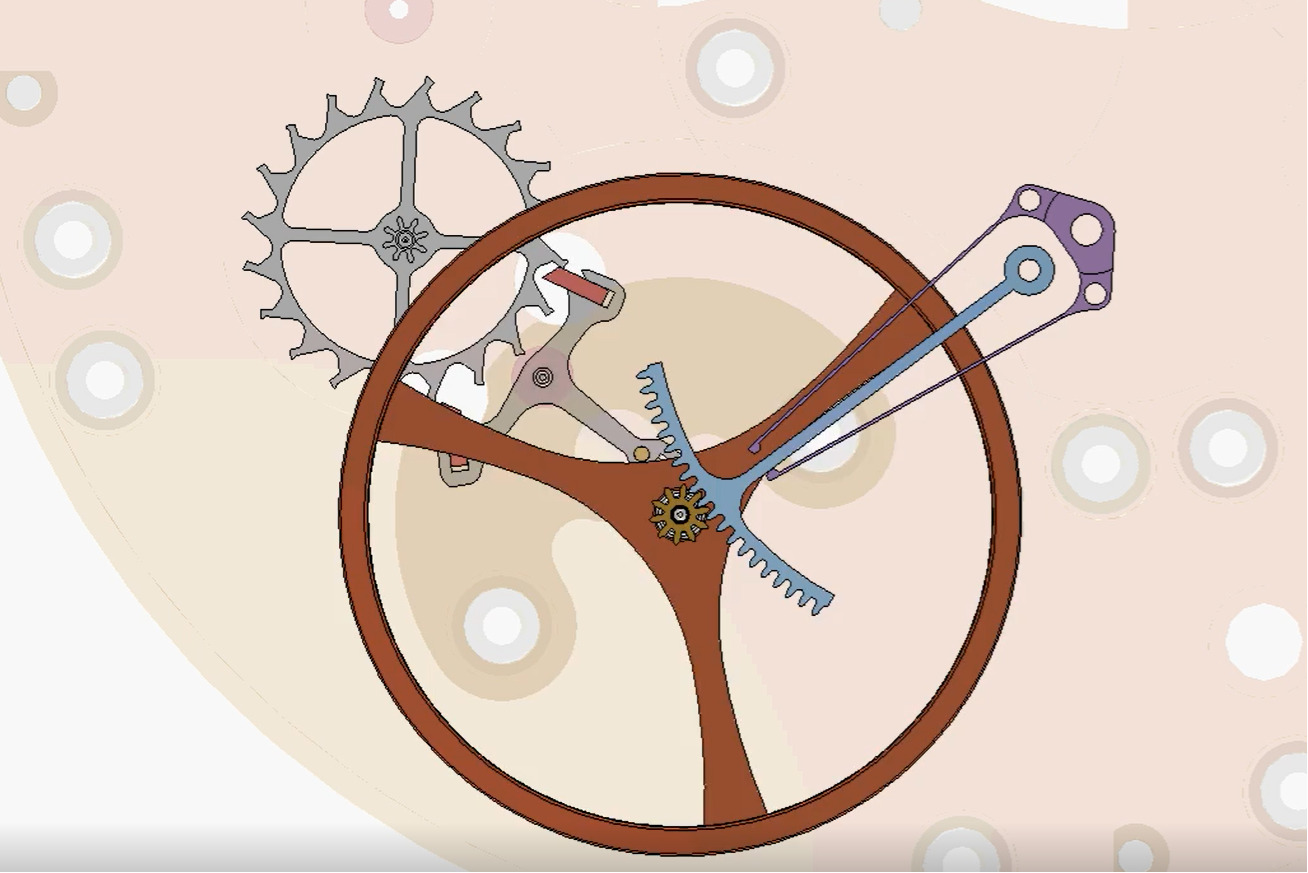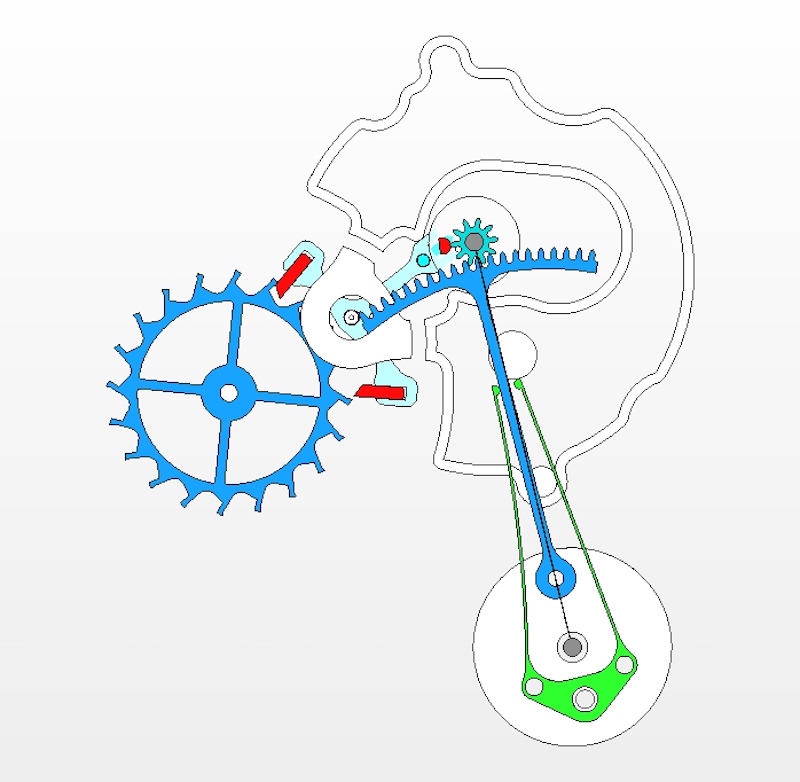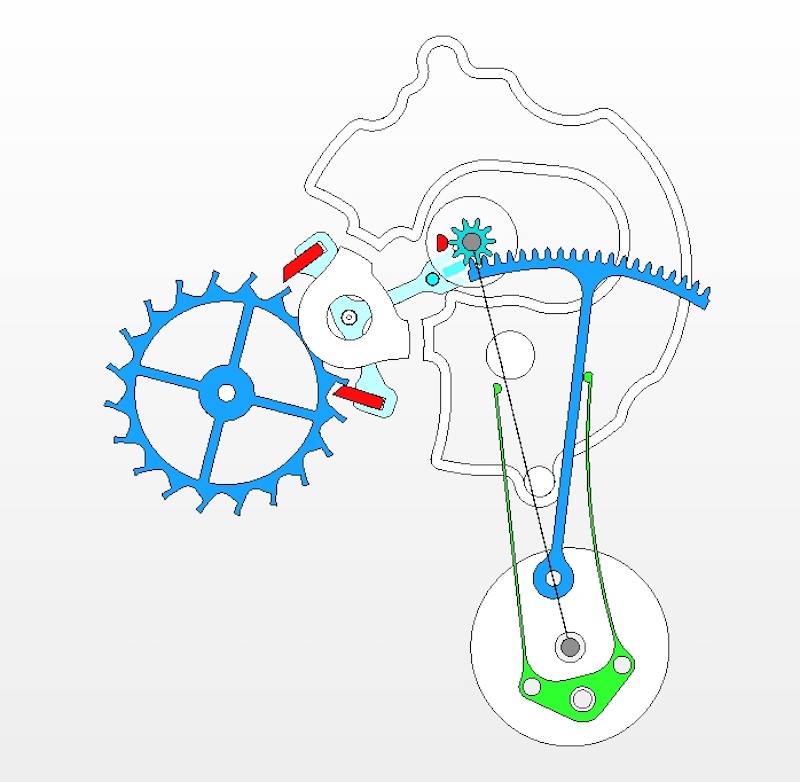Vincent Calabrese Presents Calasys, A New Concept To Replace The Traditional Hairspring
A new oscillator concept challenging a century-old paradigm

The sprung-balance, the circular flywheel that swings back and forth thanks to a coiled spring (the hairpsing or balance spring), has been the exclusive basis for mechanical timekeeping since Hooke / Huygens invented it in the late 17th century. Very few watchmakers have challenged its principle (read our story about the Frederique Constant Monolithic oscillator here), which is at the heart of mechanical timekeeping and chronometry. Today, veteran independent watchmaker Vincent Calabrese has announced his Calasys concept, a new type of oscillator with a classic balance wheel… but no hairspring.
If you are into independent watchmaking, you are surely familiar with Vincent Calabrese. Now in his late 70s, Calabrese started repairing watches in Naples in the 1950s at the age of 14. He moved to Switzerland in the early 1960s and eventually started working as an independent watchmaker in 1977. Over the ensuing years, Calabrese made a name for himself with remarkable developments such as the Corum Golden Bridge or his flying tourbillon and work for Blancpain. His role in the renaissance of mechanical watchmaking was also critical as a co-founder (with Svend Andersen) of AHCI, the Académie Horlogère des Créateurs Indépendants.
Today, Vincent Calabrese announces the fruit of his latest research in the field of chronometry with Calasys, his project to replace the balance spring with a solution presented as simple and effective. Although it has been the basis for mechanical timekeeping for decades, the sprung-balance is not a perfect oscillator and its assembly and manipulations are complex. Among its weaknesses, Calabrese stresses the effects of the points of attachment of the spring (a delicate operation and that creates imperfections in isochronism due to asymmetry) and other negative effects such as gravity.
The principle of his Calasys is quite simple. It consists in doing away with the traditional balance spring. Instead, on the balance staff, a pinion is geared with a rake that oscillates back and forth as the two arms of a spring alternatively exert a force in opposition to the rotation. The gearing is calculated so that the balance can have the greatest possible amplitude and the rake to have the smallest possible angle of rotation. The patented oscillator concept could be applied to any type of escapement working in conjunction with a sprung balance. The following animation will make things easy to understand:
The first objection that comes to mind is the friction of the rake-and-pinion (yesteryear rack-and-lever escapements have been replaced by detached escapements) or other parts of the new mechanism. Calabrese objects that “the friction is continuous and therefore controllable. It is enough to calculate it well and to apply the appropriate solutions.”
As we know, developing new oscillators is a captivating but highly complex endeavour. The sprung-balance was perfected over decades… And only time will tell if the Vincent Calabrese Calasys will make it from concept to production. The independent watchmaker is looking for partners in this respect. For now, Vincent Calabrese has produced a working prototype of his invention. Mounted on an ETA 2892 movement, its spring has been made using LIGA technology. This first prototype is ticking (as can be seen in the video above) but we do not have information about the potential benefits in terms of chronometry at this stage. This cannot be regulated yet as it features an annular balance. To do so, a variable inertial balance will be installed subsequently.
For more information, please check Vincent Calabrese’s presentation (in Italian) of his development, here.








12 responses
Really don`t get it. Some kind of perpetum mobile? Where input energy comes from? Sorry for seeming dumb.
I think I get it, bit confused.
I can’t view the vids as I’m not on f*c*book, so I remain confused about the input energy.
@gav the input is traditional – if you check his conference in Italian mentioned at the end of the article, the animations are shown there too.
Purpose of the Calbrese spring is the same of the traditional balance spring, set and control the mechanism “beat”, i. e. the frequency of the oscillation of the balance wheel. In both cases the energy goes from the main spring to the escapement wheel through a gear train, each step of the movement, is not given to the spring.
Thank you, Xavier!
Interesting, if he could construct all parts(especially the toothed gears) from silicon to make them friction free, i.e. requiring no lubrication I think it could be a winner.
It is simply replacing one for of friction impulse (lever escapement circular pushing) for another form of friction impulse in this case a so-called “rake” or “quarter” motion. I expect there is a reason this has not been used to any great extent before as it is simply a pendulum by another name. All wristwatch pendulum movements suffer from the same two issues – a lack of resistance to shocks and inefficient time keeping. I cannot see this one being very much different.
I should have added, a pendulum is not a new oscillator. It is one of the oldest.
Its not a pendulum at all, the rake is being pushed back and forth by the springs either side of it. The extra bearings at the end of the rake and the pinion seem to add friction to the assembly. Whilst it’s interesting it’s not immediately obvious how this is better than the more traditional approach.
The rake is used in a swinging motion to regulate the rate of the watch movement which means it is a form of pendulum. It may get its impetus from springs rather than gravity but the motion created and its use is pendular motion. That the new movement cannot be regulated at present and as Phil points out there seems to considerable friction in the assembly. Just how this new (old?) style of movement could be used and if it is any better than a well regulated Swiss lever movement is unclear.
This is a wonderful invention. The regulation could be done by moving the springs towards or away from the balance wheel pivot. Another source of error would be the dead zone, or lack thereof, as the returning force is handed from one return spring to another. The claim that friction is a non issue because it can be compensated for is both true and a dodge. Yes, it can be compensated for, but the price one pays for it is in decreased run time from the main spring. This design is probably less subject to isochronism, but as all the parts have mass, gravity will affect them.